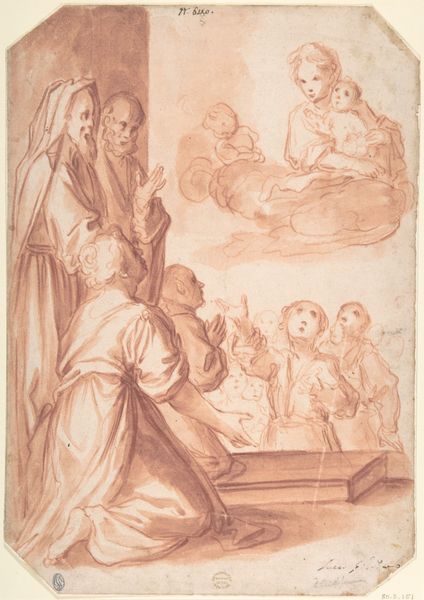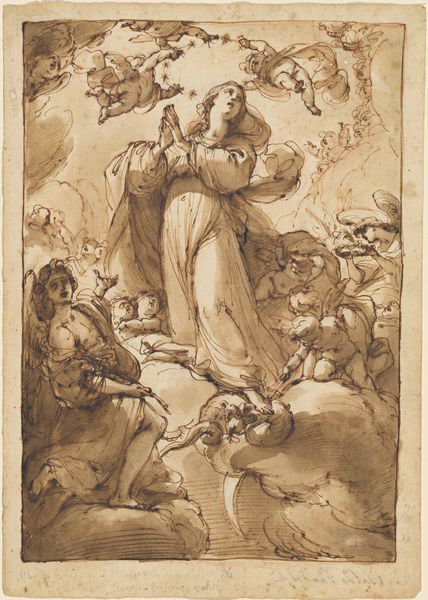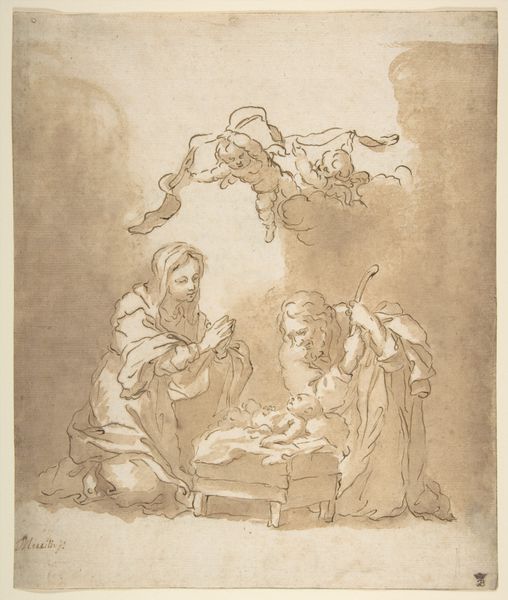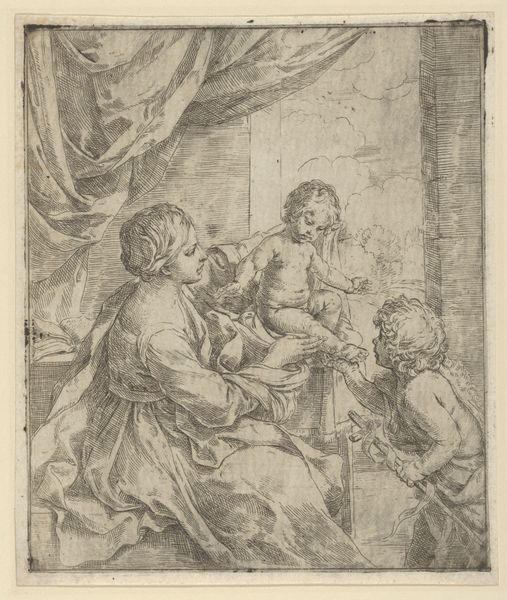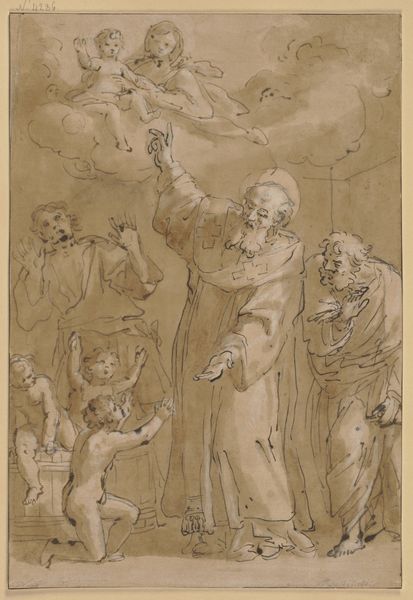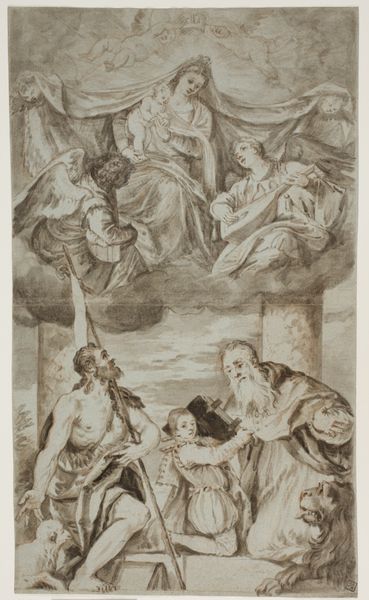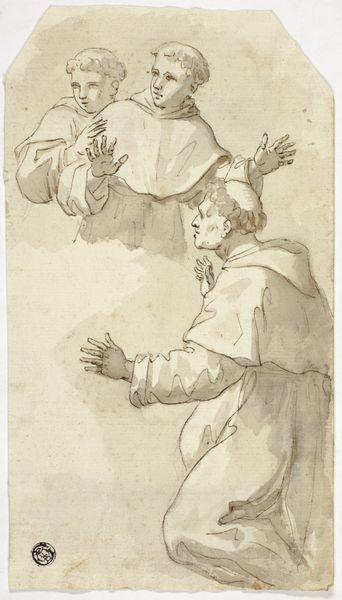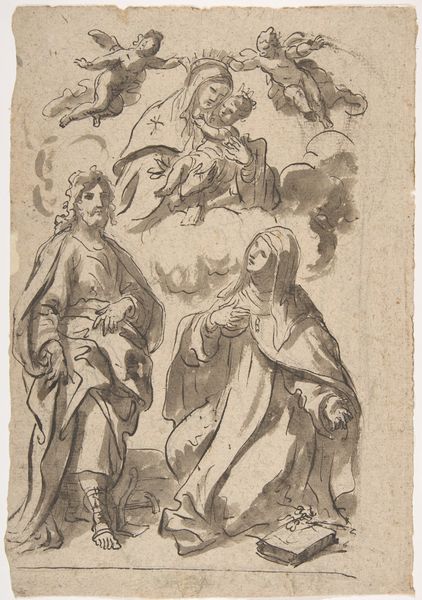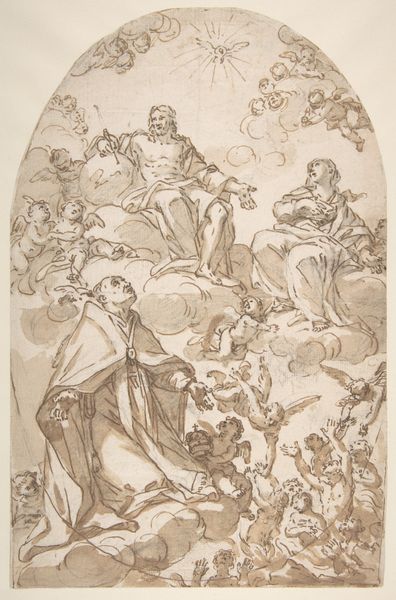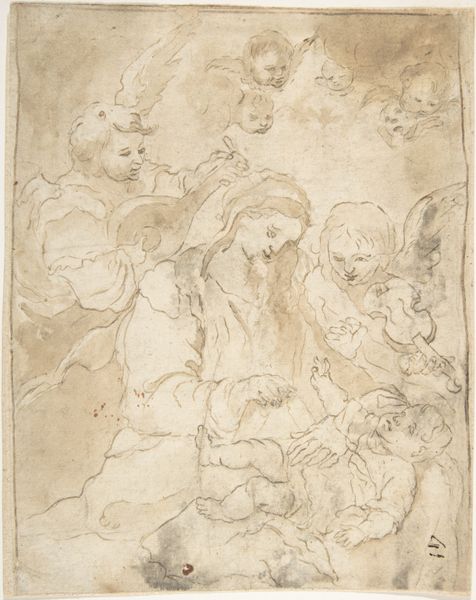
Gottvater mit Taube und Engeln über leerem quadratischem Feld, darunter Johannes der Evangelist und ein anderer anbetender Heiliger sowie die Köpfe von zwei Stiftern
0:00
0:00
drawing, paper, ink
#
drawing
#
figuration
#
paper
#
11_renaissance
#
ink
#
13_16th-century
#
history-painting
#
italian-renaissance
Copyright: Public Domain
Editor: Here we have "Gottvater mit Taube und Engeln über leerem quadratischem Feld, darunter Johannes der Evangelist und ein anderer anbetender Heiliger sowie die Köpfe von zwei Stiftern," a drawing in ink on paper by Palma il Giovane, from the Italian Renaissance. There's a mystical, almost dreamlike quality to the figures depicted. How do you interpret this work, with its rather unusual composition? Curator: The composition, precisely, invites us to unpack its hierarchical and social encoding. God the Father floats above, literally elevated, presiding over earthly figures including what seems to be donors – their status quite literally supporting the composition itself. Have you noticed how that “empty square” in the center isn’t empty at all? It's negative space, loaded with power dynamics. What’s absent is often as telling as what’s present. Editor: I hadn’t thought of it that way, focusing on the implied presence through absence. It makes me wonder, who was this drawing *for*? What purpose did it serve? Curator: Consider the patronage system of the Renaissance. An artist's career depended on pleasing wealthy elites and institutions. Drawings like these are often studies for larger works—commissions intended to reinforce power structures, both religious and social. Palma's visual language places "God" above humanity in a way that reflects that culture. Does this perspective shift how you see the “dreamlike quality?" Editor: It does, significantly. It transforms what seemed ethereal into something deliberate, designed to reinforce societal hierarchies of the time. So, it's beautiful and skillfully drawn, but also… politically charged. Curator: Precisely! And the “emptiness” screams the wealth and authority of the commissioner, whose generosity made it possible for such a work to be created in the first place. Art is always deeply embedded within a socio-political web. Editor: This has made me consider the artist’s role within the dynamics of power. It certainly gave me a new approach to analysing similar pieces! Curator: Remember to always look for the missing pieces in the narrative – Whose stories are not being told, and why?
Comments
No comments
Be the first to comment and join the conversation on the ultimate creative platform.
